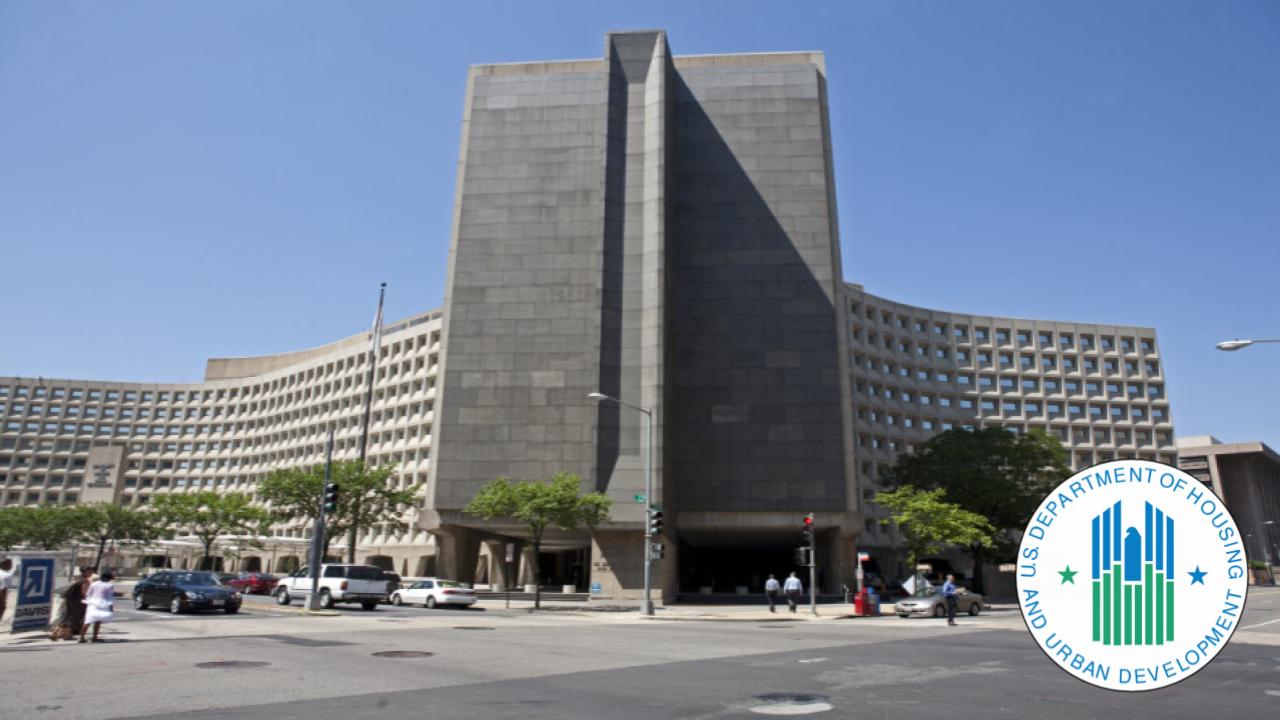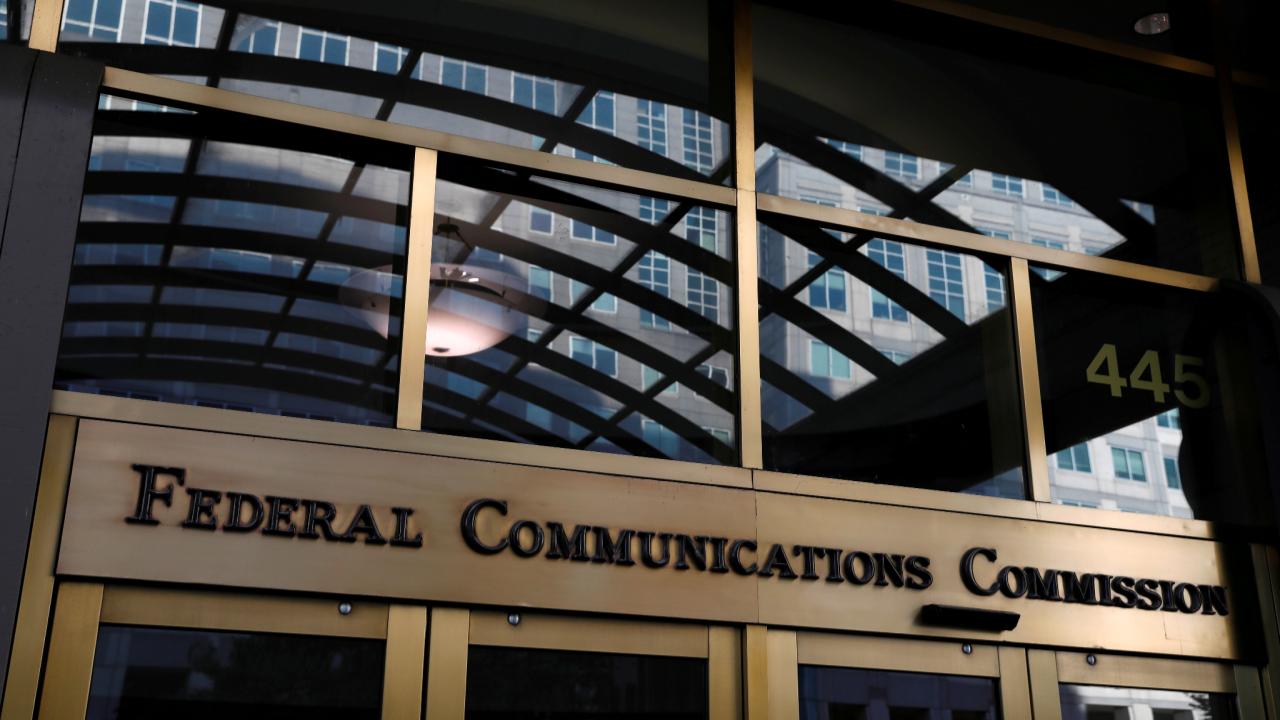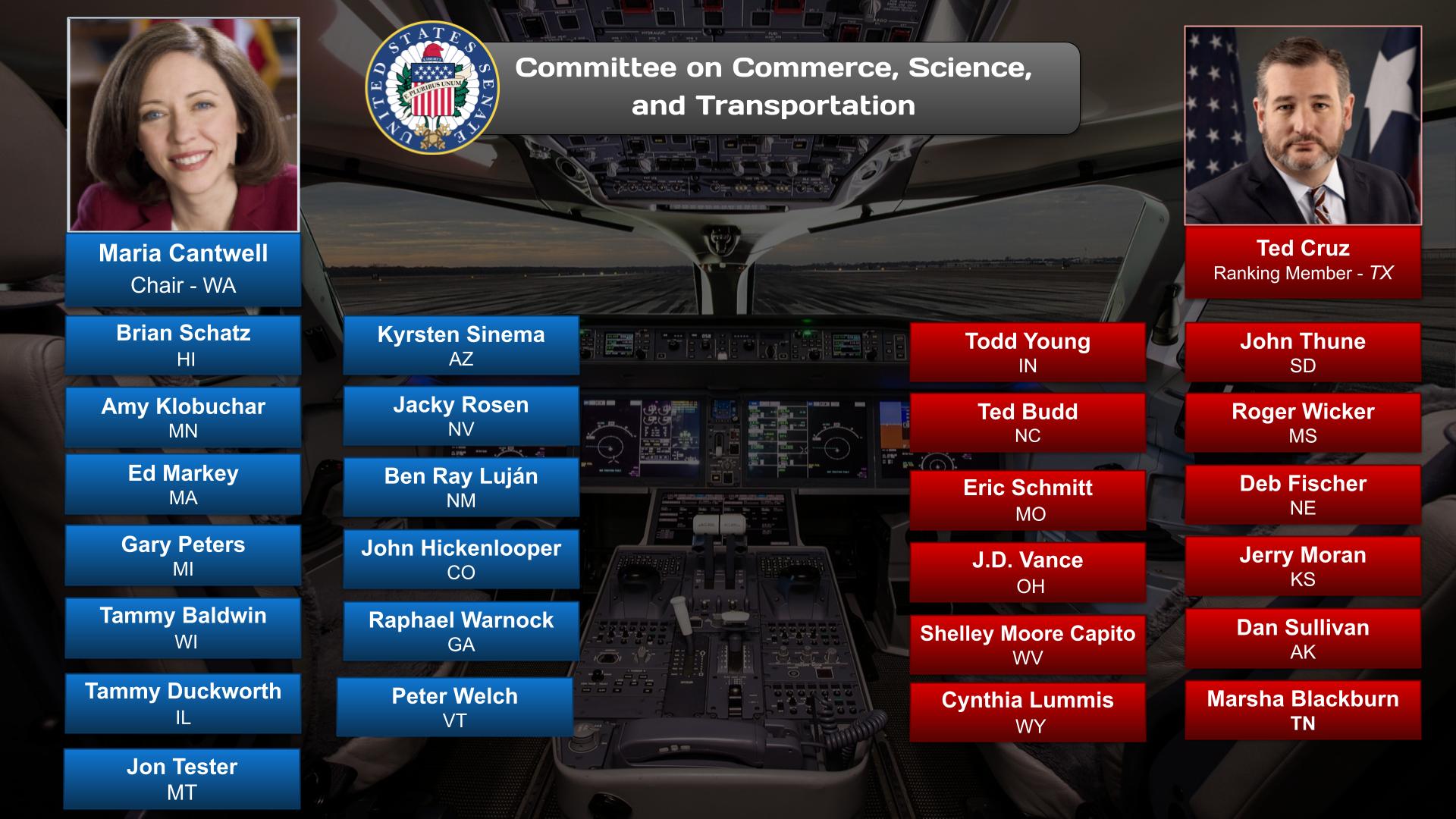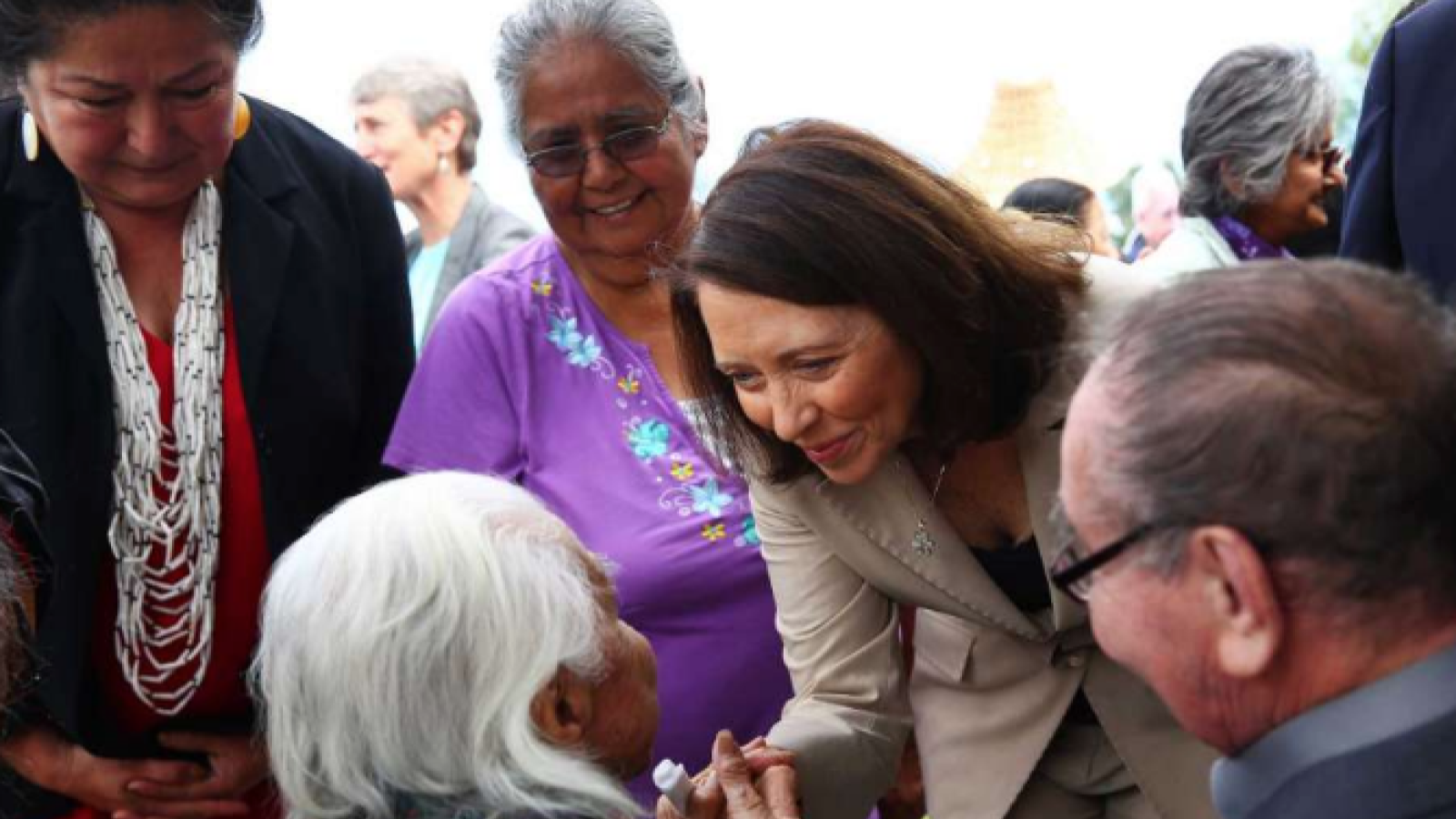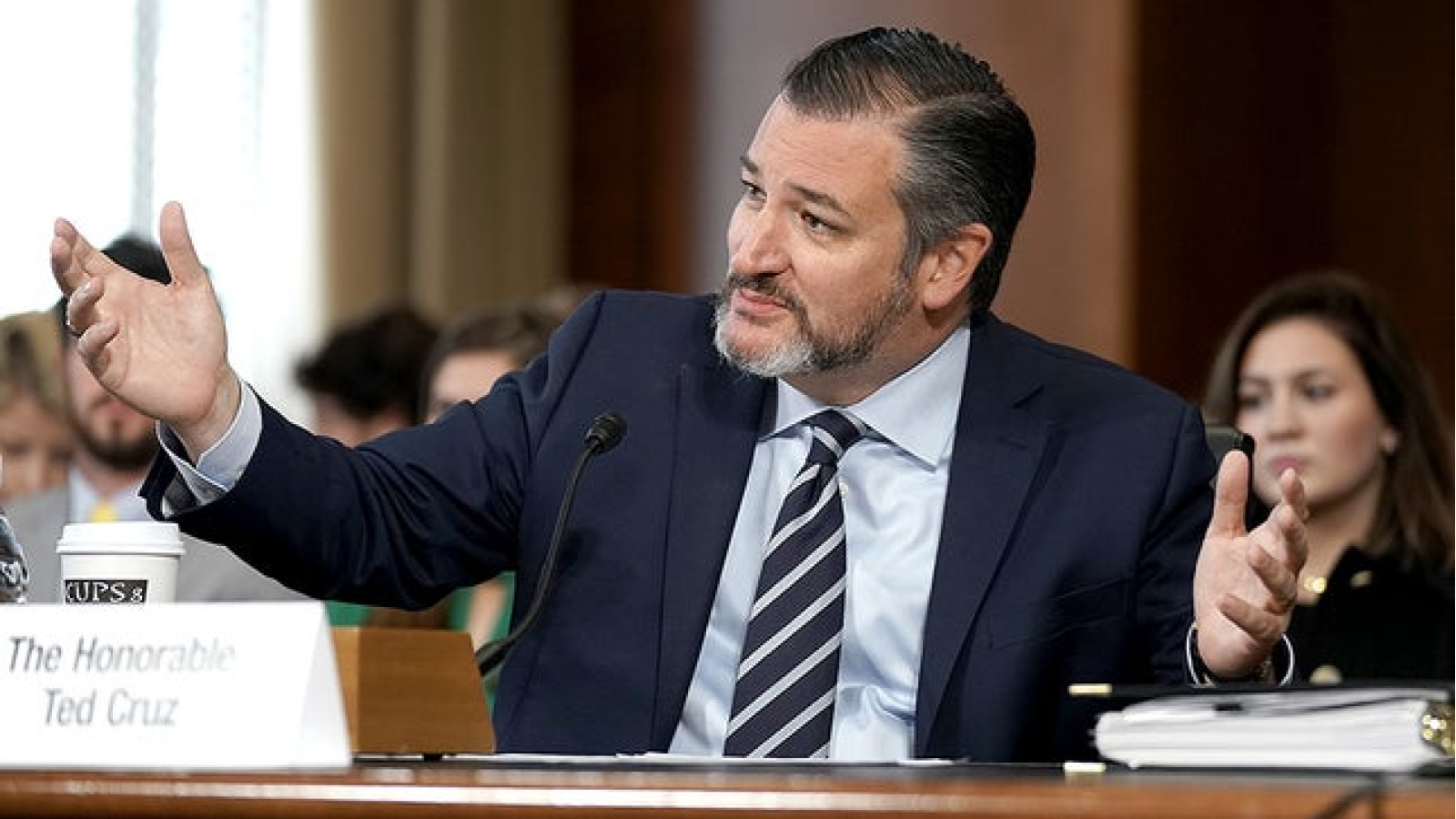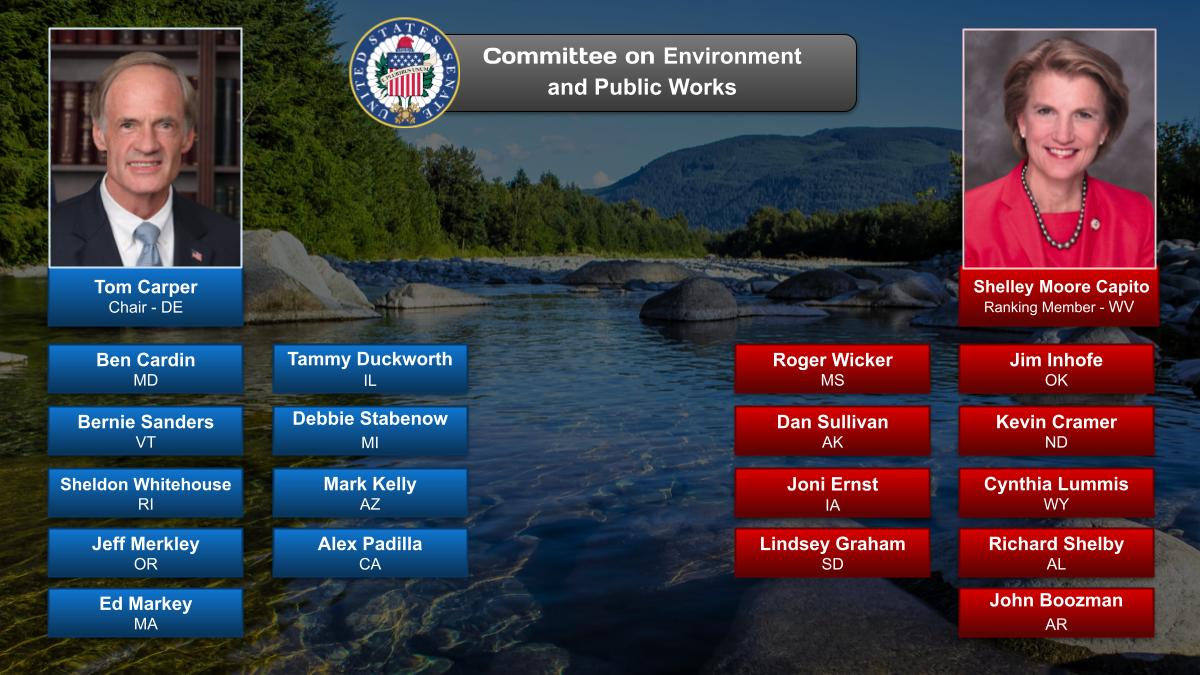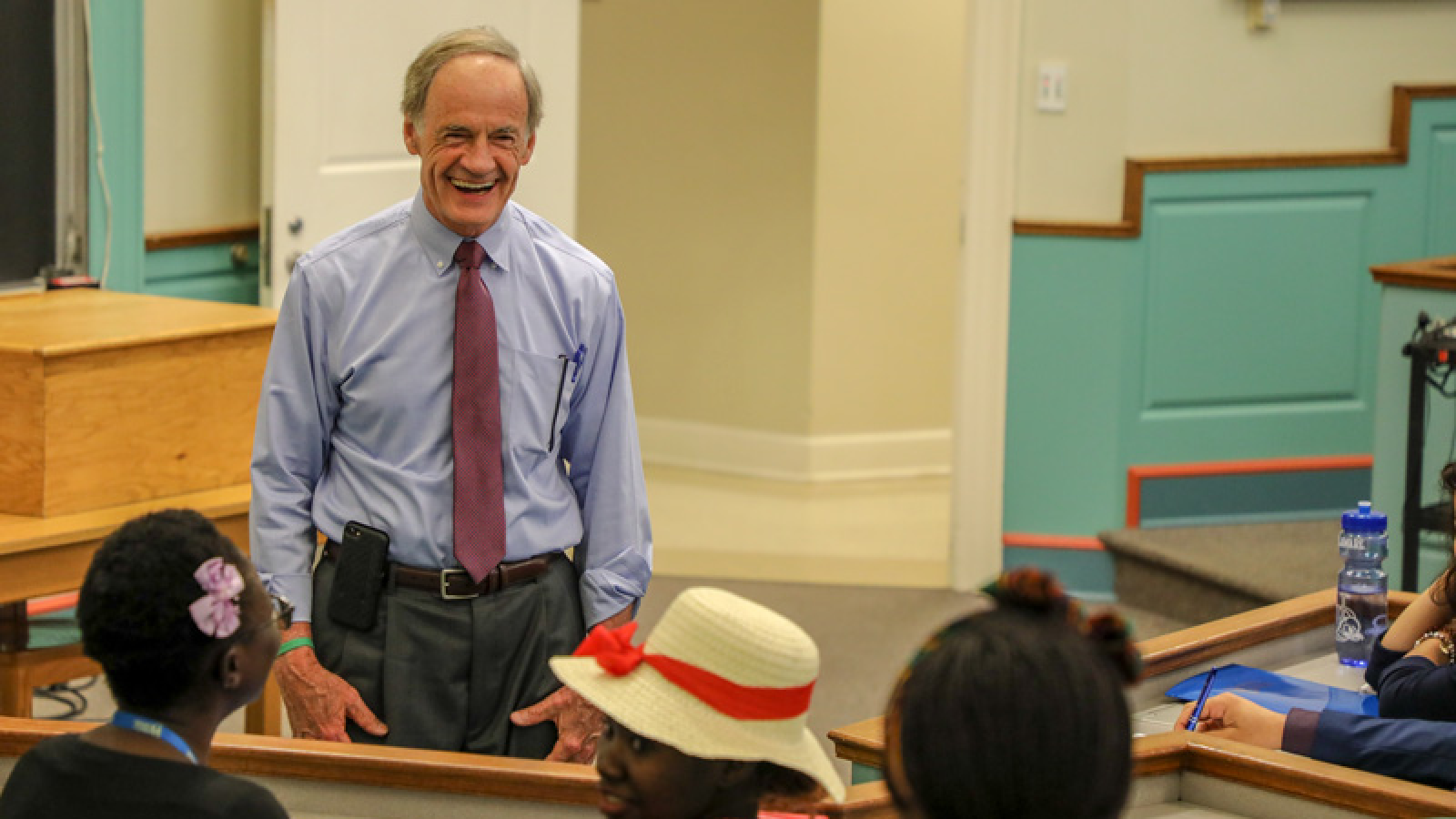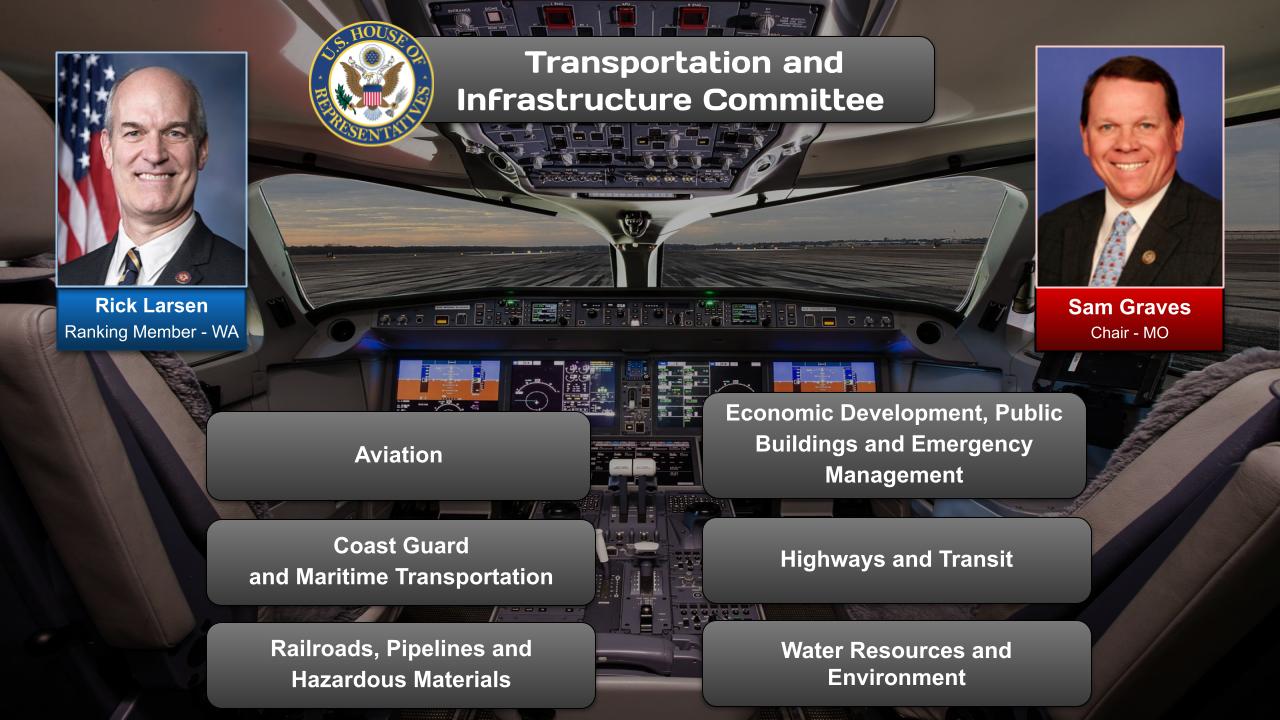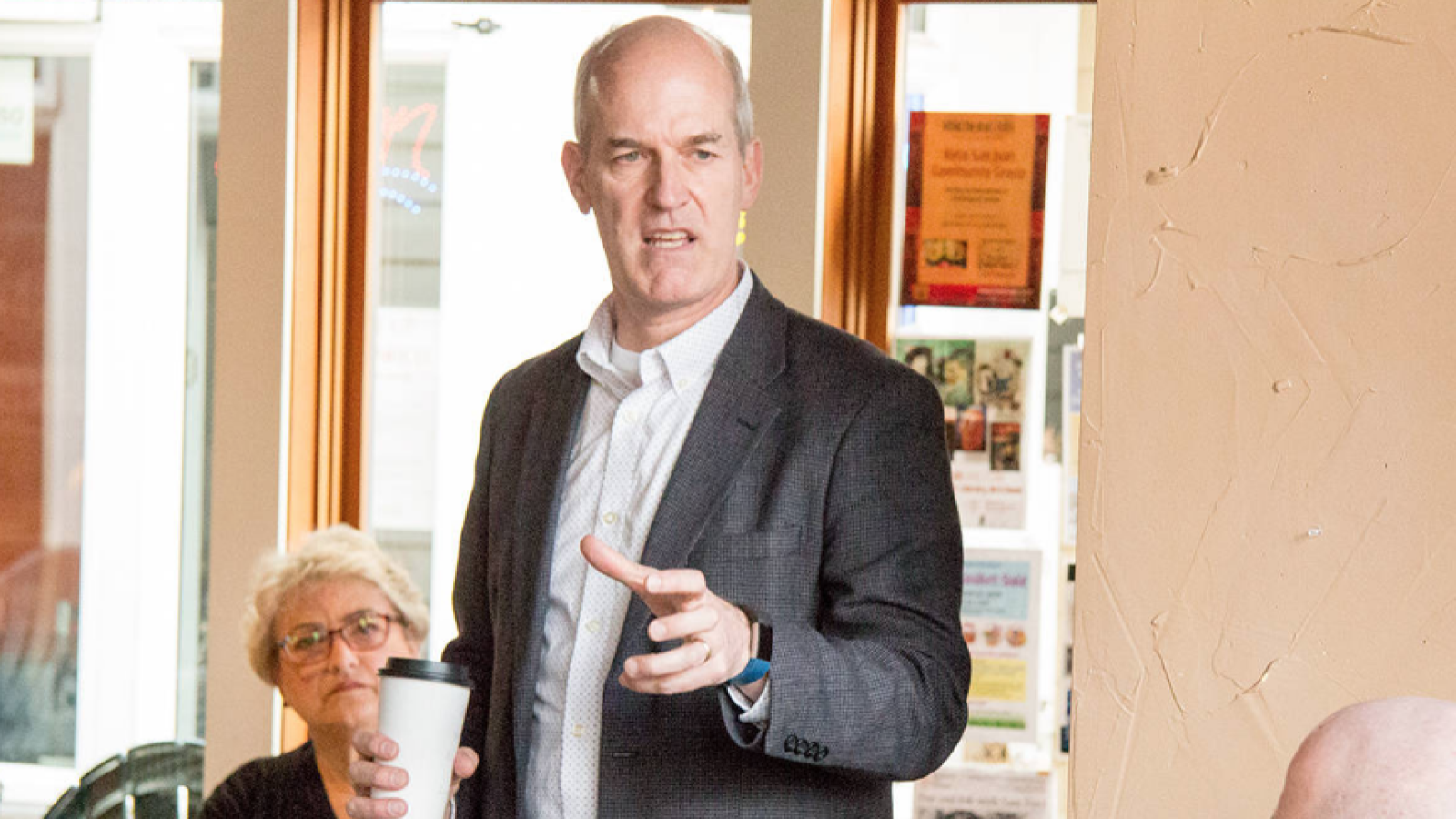Summary
This post on Broadband is 1 of 3 issues that US onAir curators are focusing on in the Infrastructure category.
Broadband access includes a wide range of speeds and technologies, all of which provide much faster access to the Internet than dial-up. The term “broadband” once had a technical meaning, but today it is more often used as a marketing buzzword to simply mean “faster”. Broadband connections are continuous or “always on” connections, without the need to dial and hangup, and do not monopolize phone lines.
Common types of broadband access include DSL (digital subscriber lines), which uses a telephone line, cable Internet access, satellite Internet access, and mobile or wireless broadband, via cell phones or a mobile broadband modem, through a cellular or wireless network, and from a cell tower. In 2015, the United States Federal Communications Commission (FCC) defined broadband as any connection with a download speed of at least 25 Mbit/s and an upload speed of at least 3 Mbit/s, though the definition has used a slower speed in the past.
Source: Wikipedia
OnAir Post: Broadband
News
Vint Cerf is known for his pioneering work as one of the fathers of the internet. He now serves as the vice president and chief internet evangelist for Google where he furthers global policy development and accessibility of the internet. He shares his Brief But Spectacular take on the future of the internet.
About
Check the Infrastructure post for the party positions, committees, government agencies related to Electric Broadband issues.
Challenges
Infrastructure Gaps:
- Many rural and underserved areas still lack access to high-speed broadband infrastructure.
- Limited fiber optic deployment, cable monopolies, and outdated copper networks hinder connectivity.
2. Cost Barriers:
- Broadband services can be expensive, especially for low-income households.
- Lack of competition and limited affordability programs make internet access unattainable for some.
3. Digital Literacy and Adoption:
- A significant portion of the population, particularly in rural and low-income areas, lacks the skills and knowledge to use broadband effectively.
- Digital literacy gaps create barriers to accessing online services and job opportunities.
4. Regulatory Hurdles:
- Inconsistent regulation across jurisdictions can slow down broadband deployment and innovation.
- Bureaucratic processes and permitting delays add costs and delays in infrastructure development.
5. Cybersecurity Concerns:
- Broadband infrastructure is vulnerable to cyberattacks, data breaches, and privacy violations.
- Lack of cyber resilience measures can undermine user trust and deter adoption.
6. Spectrum Allocation:
- The availability of radio spectrum for wireless broadband is limited and highly contested.
- Allocation policies can favor incumbents and restrict competition, leading to higher costs and lower speeds.
7. Access to Utility Poles:
- Utility poles are essential for broadband deployment, but access is often restricted or prohibitively expensive.
- Lack of cooperation between utilities and internet service providers can hinder infrastructure development.
8. Labor Shortages:
- The broadband industry faces a shortage of skilled technicians.
- Limited training programs and low wages make it difficult to attract and retain qualified workers.
9. Digital Divide:
- The gap between those with and without broadband access is significant.
- Socioeconomic factors, geographic barriers, and cultural norms contribute to the digital divide, perpetuating social and economic inequalities.
10. Policy and Funding Uncertainties:
- Fluctuating political support and inconsistent funding streams create uncertainty for broadband investment.
- Changes in government priorities and regulations can disrupt long-term planning and hinder progress.
Source: Google Search + Gemini + onAir curation
Solutions
Government investment and subsidies:
- Invest in broadband infrastructure deployment, especially in underserved rural and low-income areas.
- Provide financial incentives to encourage private sector investment in broadband.
2. Regulatory reforms:
- Streamline permitting and zoning processes for broadband deployment.
- Promote competition by encouraging new entrants and breaking up monopolies.
- Reduce regulatory barriers to private investment.
3. Public-private partnerships:
- Collaborate with local governments, utilities, and community organizations to facilitate broadband deployment.
- Leverage existing infrastructure, such as utility poles and underground conduits.
4. Digital literacy and adoption programs:
- Train individuals and businesses on how to use broadband technology effectively.
- Provide devices and support to connect low-income and marginalized populations.
5. Infrastructure modernization:
- Invest in high-speed fiber-optic networks that provide faster and more reliable internet access.
- Upgrade existing copper and cable infrastructure to support higher speeds.
6. Satellite and wireless technologies:
- Expand satellite-based internet services to reach remote and underserved areas.
- Leverage wireless technologies, such as 5G and fixed wireless, to provide broadband access.
7. Workforce development:
- Train technicians and engineers to support broadband deployment and maintenance.
- Create educational pathways to bridge the digital divide and increase the tech-savvy workforce.
8. Rural broadband initiatives:
- Establish dedicated programs to address broadband challenges in rural areas.
- Provide financial support for rural broadband providers and infrastructure development.
9. Spectrum allocation:
- Auction or license spectrum in appropriate bands to wireless carriers and broadband providers.
- Allocate spectrum for innovative technologies and services that enhance broadband access.
10. National broadband mapping and data collection:
- Create a comprehensive national broadband map to track deployment and identify underserved areas.
- Collect data on broadband speeds, availability, and pricing to inform policy decisions.
Source: Google Search + Gemini + onAir curation
Websites
Government Agencies
- Federal Communications Commission (FCC)
- National Telecommunications and Information Administration (NTIA)
- ConnectHome Initiative
Broadband Consortia and Industry Groups
- Alliance for American Broadband
- American Cable Association
- Broadband for America
- Competitive Carriers Association
- National Cable & Telecommunications Association
- Telecommunications Industry Association (TIA)
Research and Advocacy Organizations
- Brookings Institution Center for Technology Innovation
- Center for American Progress
- National Digital Inclusion Alliance
- Pew Research Center
Additional Resources
- FCC Broadband Task Force
- NTIA State Broadband Guide
- National Broadband Map
- Broadband USA
- National Broadband Plan
Source: Google Search + Gemini + onAir curation
Legislation
Laws
Source: Google Search + Gemini + onAir curation
Infrastructure Investment and Jobs Act (2021)
- Provides $65 billion to expand broadband access and affordability nationwide.
- Creates the Broadband Equity, Access, and Deployment (BEAD) program to invest in high-speed broadband infrastructure in underserved areas.
- Establishes the Digital Equity Act to promote digital literacy and access to technology.
2. American Rescue Plan Act (2021)
- Provided $350 million to support broadband expansion in eligible rural areas through the Rural Digital Opportunity Fund (RDOF).
3. Broadband Deployment Accuracy and Technological Availability (DATA) Act (2020)
- Requires broadband providers to submit accurate data on their coverage and speeds to the Federal Communications Commission (FCC).
- Improves the FCC’s ability to identify and address areas lacking broadband access.
4. Broadband Infrastructure Program (BIP) (2018)
- Provides $3.2 billion in loans and grants to support the deployment of broadband networks in rural areas.
- Prioritizes projects that connect schools, libraries, hospitals, and other critical facilities.
5. Keep Americans Connected Act (2020)
- Prohibits broadband providers from terminating service due to non-payment during the COVID-19 pandemic.
- Extends the availability of the FCC’s Emergency Broadband Benefit Program, which provides eligible households with subsidies for broadband service.
6. FCC Broadband Access Fund (2012)
- Provides annual funding to support broadband deployment in rural and low-income areas.
- Has contributed to the expansion of high-speed broadband access in underserved communities.
7. Connect America Fund (CAF) (2011)
- A legacy program that provided subsidies to broadband providers to extend service to unserved areas.
- Merged with the Broadband Access Fund in 2012.
New Bills in 2023-2024
Source: Google Search + Gemini + onAir curation
Affordable Connectivity Act (ACA) Extension and Expansion (S. 1811)
- Extends and expands the ACA, which provides a $30 monthly subsidy for low-income households to purchase broadband service.
- Expands eligibility and increases funding for the program to reach more Americans.
2. Broadband Equity, Access, and Deployment (BEAD) Program (S. 2992)
- Establishes a $42.5 billion BEAD grant program to fund broadband infrastructure projects in unserved and underserved areas.
- Prioritizes projects that provide affordable and equitable access to broadband.
3. Digital Infrastructure and Broadband Investment Act (S. 4456)
- Provides funding for broadband infrastructure projects, including fiber optic networks and wireless broadband.
- Streamlines permitting processes and reduces regulatory barriers to broadband deployment.
4. Rural Broadband Coalition Act (S. 3367)
- Establishes a Rural Broadband Coalition to coordinate federal broadband efforts and provide technical assistance to rural communities.
- Addresses unique broadband challenges in rural areas, such as distance and cost.
5. Broadband Upgrade Act (S. 2688)
- Provides funding for grants and loans to broadband providers to upgrade their networks to deliver gigabit-speed broadband.
- Promotes the adoption of next-generation broadband technologies.
6. Closing the Rural Broadband Gap Act (H.R. 3745)
- Establishes a new program within the Rural Utilities Service to provide loans and grants for broadband infrastructure projects in rural areas.
- Prioritizes projects that serve low-income households and businesses.
7. FCC Broadband Data Improvement Act (H.R. 4818)
- Requires the Federal Communications Commission (FCC) to improve the accuracy and availability of broadband data.
- Ensures that policymakers have access to reliable information to make informed decisions about broadband deployment.
8. Digital Equity Act (S. 1531)
- Addresses the digital divide by providing funding for digital literacy programs, access to devices, and broadband affordability initiatives.
- Focuses on reaching underserved populations, such as low-income households, rural communities, and people with disabilities.
9. Broadband Competition and Innovation Act (S. 1635)
- Promotes competition in the broadband market by encouraging new entrants and supporting community-owned networks.
- Aims to increase innovation and lower prices for consumers.
10. Broadband Bridge Act (S. 2051)
- Provides funding to states and localities for broadband infrastructure projects that bridge the digital divide and expand access to underserved areas.
- Supports public-private partnerships and innovative approaches to broadband deployment.
Committees, Agencies, & Programs
Committees
Source: Google Search + Gemini + onAir curation
House of Representatives Committees:
- House Energy and Commerce Committee:
- Subcommittee on Communications and Technology
- House Transportation and Infrastructure Committee:
- Subcommittee on Communications and Technology
- House Appropriations Committee:
- Subcommittee on Transportation, Housing and Urban Development, and Related Agencies
Senate Committees:
- Senate Commerce, Science, and Transportation Committee:
- Subcommittee on Communications, Technology, Innovation, and the Internet
- Senate Homeland Security and Governmental Affairs Committee:
- Subcommittee on Privacy, Technology, and the Law
- Senate Appropriations Committee:
- Subcommittee on Commerce, Justice, Science, and Related Agencies
Joint Committees:
- Joint Select Committee on the Solvency of Multiemployer Pension Plans:
- Subcommittee on Communications and Technology
Other Relevant Committees:
- Senate Banking, Housing, and Urban Affairs Committee: Addresses broadband affordability and deployment.
- House Veterans’ Affairs Committee: Focuses on broadband access for veterans.
- House Small Business Committee: Considers the impact of broadband on small businesses.
- House Science, Space, and Technology Committee: Explores the technological aspects of broadband.
These committees play key roles in addressing broadband challenges in the United States, including:
- Establishing funding for broadband infrastructure and deployment
- Setting policies and regulations to promote competition and innovation
- Ensuring the privacy and security of broadband networks
- Addressing the digital divide and providing access to underserved communities
- Monitoring the implementation and effectiveness of broadband programs
Government Agencies
Source: Google Search + Gemini + onAir curation
Federal Communications Commission (FCC)
- Primary agency responsible for regulating the US telecommunications industry
- Oversees broadband infrastructure deployment and affordability
- Administers programs such as the Connect America Fund and Broadband Data Collection
National Telecommunications and Information Administration (NTIA)
- Part of the US Department of Commerce
- Coordinates broadband policy and funding across federal agencies
- Manages the Broadband Technology Opportunities Program (BTOP)
Department of Agriculture (USDA)
- Administers broadband funding programs for rural areas
- Provides loans and grants through the ReConnect Program and the Rural Utilities Service (RUS)
Department of Housing and Urban Development (HUD)
- Supports broadband infrastructure deployment in affordable housing developments
- Funds broadband connectivity projects through the ConnectHOME Initiative
Department of Energy (DOE)
- Conducts research on broadband technologies and infrastructure
- Supports broadband deployment in rural and underserved communities
Department of Veterans Affairs (VA)
- Provides broadband access to veterans and their families through the Veterans Broadband Program
Department of Transportation (DOT)
- Coordinates broadband deployment along transportation infrastructure
- Administers the Broadband Infrastructure Program (BIP)
Environmental Protection Agency (EPA)
- Supports broadband deployment in underserved communities through the Clean Connect Initiative
General Services Administration (GSA)
- Manages federal government contracts for broadband services
- Facilitates collaboration on broadband initiatives
Programs & Initiatives
Source: Google Search + Gemini + onAir curation
Broadband Infrastructure Programs:
- Broadband Equity, Access, and Deployment (BEAD) Program: $42.45 billion to provide broadband infrastructure grants to states, territories, and tribal governments to expand high-speed internet access in unserved and underserved areas.
- NTIA Tribal Broadband Connectivity Program: $1.98 billion to support broadband infrastructure deployment on tribal lands, providing access to high-speed internet for Native American communities.
- Rural Digital Opportunity Fund (RDOF): $20.4 billion to support broadband infrastructure deployment in rural areas where commercial investment is lacking.
Digital Equity Programs:
- Affordable Connectivity Program (ACP): Provides eligible households with a monthly subsidy of up to $30 towards broadband internet service and up to $100 off the purchase of a connected device.
- Digital Equity Act Grant Program: Fund emergency connectivity initiatives, pilot programs to address digital gaps, and support the development of digital literacy skills among underserved populations.
Policy Initiatives:
- National Broadband Plan: Outlines the government’s long-term strategy to ensure broadband access for all Americans by 2026.
- Spectrum Auctions: Allocate additional spectrum licenses for wireless broadband services to increase capacity and coverage.
- Infrastructure Investment and Jobs Act (IIJA): Provides $65 billion for broadband infrastructure investments, including $42.45 billion for BEAD and $20 billion for middle-mile broadband infrastructure.
Government Agencies and Partnerships:
- National Telecommunications and Information Administration (NTIA): Leads the government’s efforts to expand broadband access and adoption.
- Federal Communications Commission (FCC): Regulates the communications industry and enforces broadband regulations.
- National Digital Inclusion Alliance (NDIA): Coordinates efforts among stakeholders to bridge the digital divide.
Other Initiatives:
- ConnectHome: A public-private partnership to provide low-cost broadband and devices to families living in public housing.
- Smart Cities Initiative: Supports the development of smart cities that leverage broadband to improve efficiency and services.
- Community Connect Grant Program: Provides grants to non-profit organizations to establish and sustain community-based broadband programs.
More Information
Nonpartisan Organizations
Source: Google Search + Gemini + onAir curation
Research and Advocacy Organizations:
- Broadband for America: Advocates for affordable, accessible, and equitable broadband for all Americans.
- Center for Digital Equity: Promotes digital inclusion and equity by addressing the barriers to broadband access.
- Consumer Reports: Conducts independent testing and research on broadband services and technologies.
- Information Technology and Innovation Foundation: Analyzes broadband policy and its impact on economic growth and innovation.
- Pew Research Center: Surveys and studies public opinion on broadband access and use.
Industry and Stakeholder Organizations:
- American Library Association: Supports libraries’ role in providing broadband access and digital literacy education.
- National Cable & Telecommunications Association (NCTA): Represents the cable and broadband industry.
- National Telecommunications and Information Administration (NTIA): A federal agency that oversees broadband policy and funding.
- Wireless Internet Service Providers Association (WISPA): Advocates for fixed wireless broadband providers.
- Public Knowledge: A non-profit organization that promotes open and affordable access to technology.
Government Agencies with Broadband Responsibilities:
- Federal Communications Commission (FCC): Regulates broadband services and allocates spectrum.
- Department of Commerce: Includes the NTIA, which oversees broadband policy and funding.
- Department of Agriculture: Funds broadband infrastructure in rural areas.
- Department of Housing and Urban Development (HUD): Supports broadband access in public housing.
- Department of Veterans Affairs (VA): Provides broadband access to veterans in VA facilities.
Partisan Organizations
Source: Google Search + Gemini + onAir curation
Democratic Key Partisan Organizations:
- National Telecommunications and Information Administration (NTIA): Part of the United States Department of Commerce, the NTIA works to expand broadband access and adoption, particularly in rural and underserved areas.
- Federal Communications Commission (FCC): An independent agency that regulates interstate and international communications, the FCC has authority over broadband policy and infrastructure development.
- ConnectHome: A program of the Department of Housing and Urban Development, ConnectHome aims to provide affordable broadband service and devices to low-income families in public housing.
Republican Key Partisan Organizations:
- American Legislative Exchange Council (ALEC): A conservative think tank that promotes free market policies. ALEC has supported legislation to reduce broadband regulation and encourage private sector investment.
- Competitive Enterprise Institute (CEI): A free market-oriented think tank that advocates for limited government regulation. CEI has opposed government programs to expand broadband access, arguing that the private sector can do it more efficiently.
- American Enterprise Institute (AEI): A conservative think tank that focuses on public policy issues. AEI has supported deregulation of the broadband industry and promoted the role of private sector investment in infrastructure development.
“Internet in the US” (Wiki)
Contents
| Internet |
|---|
 |
| |
| This article is part of a series on the |
| Culture of the United States |
|---|
 |
| Society |
| Arts and literature |
| Other |
| Symbols |
| United States portal |
The Internet in the United States grew out of the ARPANET, a network sponsored by the Advanced Research Projects Agency of the U.S. Department of Defense during the 1960s. The Internet in the United States in turn provided the foundation for the worldwide Internet of today.
Internet connections in the United States are largely provided by the private sector and are available in a variety of forms, using a variety of technologies, at a wide range of speeds and costs. In 2000, a majority of U.S. households had at least one personal computer and internet access the following year.[1] In September 2007, a majority of U.S. survey respondents reported having broadband internet at home.[2] In 2019, the United States ranked 3rd in the world for the number of internet users (behind China and India), with 312.32 million users.[3] As of 2019, 90% of adults in America use the internet, either irregularly or frequently.[4] The United States ranks #1 in the world with 7,000 Internet Service Providers (ISPs) according to the CIA.[5] Internet bandwidth per Internet user was the 43rd highest in the world in 2016.[6]
Internet top-level domain names specific to the U.S. include .us, .edu, .gov, .mil, .as (American Samoa), .gu (Guam), .mp (Northern Mariana Islands), .pr (Puerto Rico), and .vi (U.S. Virgin Islands). Many U.S.-based organizations and individuals also use generic top-level domains, such as .com, .net, and .org.
Overview
Access and speed

Access to the Internet can be divided into dial-up and broadband access. Around the start of the 21st century, most residential access was by dial-up, while access from businesses was usually by higher speed connections. In subsequent years dial-up declined in favor of broadband access. Both types of access generally use a modem, which converts digital data to analog for transmission over a particular analog network (ex. the telephone or cable networks).[9]
Dial-up access is a connection to the Internet through a phone line, creating a semi-permanent link to the Internet.[9] Operating on a single channel, it monopolizes the phone line and is the slowest method of accessing the Internet. Dial-up is often the only form of Internet access available in rural areas because it requires no infrastructure other than the already existing telephone network. Dial-up connections typically do not exceed a speed of 56 kbit/s, because they are primarily made via a 56k modem.[9]
Broadband access includes a wide range of speeds and technologies, all of which provide much faster access to the Internet than dial-up. The term “broadband” once had a technical meaning, but today it is more often used as a marketing buzzword to simply mean “faster”. Broadband connections are continuous or “always on” connections, without the need to dial and hangup, and do not monopolize phone lines.[9] Common types of broadband access include DSL (digital subscriber lines), which uses a telephone line,[10][11] cable Internet access,[12][13][14][15][16] satellite Internet access,[17][18][19][20][21][22][23][24][25] and mobile or wireless broadband, via cell phones or a mobile broadband modem, through a cellular or wireless network, and from a cell tower.[26][27][28][29][30][31][32][33][34][35][36] In 2015, the United States Federal Communications Commission (FCC) defined broadband as any connection with a download speed of at least 25 Mbit/s and an upload speed of at least 3 Mbit/s, though the definition has used a slower speed in the past.[37] In March 2024, the FCC increased the minimums to 100 Mbit/s downloads and 20 Mbit/s uploads for defining broadband.[38]
The percentage of the U.S. population using the Internet grew steadily through 2007, and declined slightly in 2008 and 2009. Growth resumed in 2010, and reached its highest level so far (81.0%) in 2012, the latest year for which data is available. 81.0% is slightly above the 2012 figure of 73% for all developed countries. Based on these figures the U.S. ranked 12th out of 206 countries in 2000, fell to 31st out of 209 by 2010, and was back up slightly to 28th out of 211 in 2012. In 2012 the U.S. figure of 81.0% was similar to those of France (83.0%), Belgium (82.0%), Australia (82.3%), Austria (81.0%), Slovakia (80%), Kuwait (79.2%), and Japan (79.1%). The figures for the top ten countries in 2012 ranged from 91.0% for Finland to 96.9% for the Falkland Islands.[39]
Internet usage in the United States varies widely from state to state. For example, in the U.S. overall in 2011, 77.9% of the population used the Internet. But in that same year (2011), there was a large gap in usage between the top three states – Washington (80.0%), New Hampshire (79.8%) and Minnesota (79.0%) – and the bottom three states – Mississippi (59.0%), New Mexico (60.4%) and Arkansas (61.4%).[40]
According to an April 2018 article in Motherboard, “In every single state, a portion of the population doesn’t have access to broadband, and some have no access to the internet at all.”[41]
Internet use in the United States 2000 to 2015 as a percentage of population Internet users[39] Fixed broadband
subscriptions[42]Wireless broadband
subscriptions[43]Year % of
populationWorld
rank% of
populationWorld
rank% of
populationOECD rank[44] 2015 75% 2014 73% 2013 72% 2012 75% 28.0% 24 of 193 89.8% 6 of 34 2011 70% 27.4% 25 of 194 77.1% 7 of 34 2010 72% 26.7% 27 of 205 61.1% 8 of 34 2009 71% 25.5% 26 of 201 46.9% 7 of 30 2008 74% 24.8% 23 of 197 2007 75% 23.2% 20 of 190 2006 69% 17 of 206 20.1% 22 of 174 2005 68% 15 of 206 17.2% 18 of 174 2004 65% 14 of 204 12.7% 18 of 151 2003 62% 12 of 202 9.5% 17 of 131 2002 59% 13 of 207 6.9% 13 of 109 2001 49% 12 of 207 4.5% 9 of 81 2000 43% 12 of 206 2.5% 5 of 45
Fixed (wired) and wireless broadband penetration have grown steadily, reaching peaks of 28.0% and 89.8% respectively in 2012. These rates place the U.S. above the world average of 25.9% for fixed broadband in developed countries and well above the average of 62.8% for wireless broadband in OECD countries. Wireless broadband subscriptions in the U.S. are primarily mobile-cellular broadband. Because a single Internet subscription may be shared by many people and a single person may have more than one subscription, the penetration rate will not reflect the actual level of access to broadband Internet of the population and penetration rates larger than 100% are possible.
A 2013 Pew study on home broadband adoption found that 70% of consumers have a high-speed broadband connection. About a third of consumers reported a “wireless” high-speed connection,[8] but the report authors suspect that many of these consumers have mistakenly reported wireless connections to a wired DSL or cable connection.[9] Another Pew Research Center survey, results of which were published on February 27, 2014, revealed 68% of American adults connect to the Internet with mobile devices like smartphones or tablet computers. The report also put Internet usage by American adults as high as 87%, while young adults aged between 18 and 29 were at 97%.[45]
In measurements made between April and June 2013 (Q2), the United States ranked 8th out of 55 countries with an average connection speed of 8.7 Mbit/s. This represents an increase from 14th out of 49 countries and 5.3 Mbit/s for January to March 2011 (Q1). The global average for Q2 2013 was 3.3 Mbit/s, up from 2.1 Mbit/s for Q1 2011. In Q2 2013 South Korea ranked first at 13.3 Mbit/s, followed by Japan at 12.0 Mbit/s, and Switzerland at 11.0 Mbit/s.[46][47][needs update]
Ownership
Unlike in countries such as China, Japan and New Zealand, internet infrastructure such as fibre optic cables, 4G LTE, 5G base stations, DSL (Digital Subscriber Line) and satellite networks in the United States are owned by private ISP’s as opposed to the state,[48][49] this in conjunction with high concentration of market share among four major players: AT&T (41.4%), Comcast (36.1%), Charter (33.4%) and Verizon (17.4%) as of 2021 allows for the creation of local monopolies whereby providers have little incentive to compete with each other or enter other providers’ “territory” in order to fix prices and maintain market share.[50]
Since ownership of underlying infrastructure is decentralised and privatised, the construction of internet infrastructure is also fragmented and driven by profit instead of public need.[51] Given this, government attempts at funding roll out of infrastructure in rural and under-served areas where no financial incentive exists to for private companies to build any remains slow and costly, since the US government is forced to subsidise private ISP’s to construct fibre optic cable networks and other key infrastructure.[52][53]
As of 2022, a study by the Fibre Broadband Association estimated that only 43% of US households had access to fibre optic connections with “Tier 1” providers such as AT&T, Verizon, Lumen five others building 72% of fiber coverage in the United States.[54] FCC data as of 2019 indicated that some 21.3 million Americans lacked access to fixed broadband with speeds of at 25 Mbps down and 3 Mbps up.[55] Attempts by the US government to roll out or upgrade key internet infrastructure in any uniform or integrated way remain strongly influenced by corporate interests, lobbying at both the state and federal level and objections to what is perceived as government intervention in free market dynamics.[56][57][58]
Just like Standard Oil, they’ve [Verizon and others] cornered the market on a commodity that’s essential for every part of American society to operate. High-speed Internet access undergirds every policy direction the country wants to take. And yet, control over this commodity is centralized in the hands of a very few providers.
— Susan Crawford, (Former Special Assistant to President Obama for Science, Technology, and Innovation Policy)
Competition
A lack of competition and consumer choice in the broadband provider market has been cited as the primary reason Internet costs can be high and speeds and access can be poor even in urban areas.[59] In the DSL market, the Telecommunications Act of 1996 required incumbent local exchange carriers to lease lines to consumers to competitive local exchange carriers, but changes to FCC regulations in 2005 significantly weakened these requirements. In the cable broadband market, the 1996 law also allowed cable companies to consolidate, resulting in a small number of large companies, which agreed to give each one a monopoly in a certain geographic area.[59]
Lack of competition has also been attributed to past stringent regulation from federal, state, and local levels, which raises barriers to entry.[60] Specifically, such criticism has referenced limitations regarding access to and development of the physical infrastructure necessary to broadband, including right-of-way to land and ownership of utility poles. The Rural Broadband Association, an organization representing rural-centric providers, has pointed to the expensive permits and procedural delays in preventing “universal” broadband access.[61] For rural areas such as the ones the RBA represents, financial returns can be insufficient and thus private actors have little incentive to compete over another in establishing relevant facilities. This problem is particularly salient for indigenous parts of the U.S, where tribal lands “have some of the lowest internet access rates of any demographic”.[62] Policy goals of equity, not profit, have been driving the few access projects targeted towards these communities as a result of unrewarding demand. In other circumstances, where demand is high enough to propel investment, the fixed costs associated with building broadband infrastructure are high enough to deter even the larger providers. Sprint claims it spent “tens of millions of dollars” in their checking for compliance with NEPA, a set of environmental impact regulations, that found “no significant impact” by the conclusion and ultimately delayed their entrance in that particular geography.[63]
To remedy this anti-competitive climate, governments have worked to minimize costs entrants may incur. The Telecommunications Act of 1996 expanded access rights to pole attachments for ISPs with federal subsidies in an aim to encourage provider participation.[64]
In 2015, the Federal Communications Commission granted a preemption petition requested by local utility boards in North Carolina and Tennessee over the state laws that, as a result of private provider lobbying, had legally prevented municipalities from entering the broadband market.[65] To reduce costs and expand the market, the FCC has also approved a “Dig Once” policy—a mandate that requires cities to implement broadband conduits during construction of federally-funded roads.[66] Because the financial price of laying down fiber constitutes such a large portion of deployment costs, measures sympathetic towards this step of entrance make it easier for more actors to invest.
A number of counties have also issued ordinances or grants that waive or offset certain fees associated with building infrastructure in order to encourage broadband building projects.[67][68][69]
Outside of regulatory and legislative action, states have at their disposal informal policies that offer other incentives for investment, such as collecting and providing local data to streamline deployment action or communication efforts.[70]
Internet taxes
In 1998 the federal Internet Tax Freedom Act halted the expansion of direct taxation of the Internet that had begun in several states in the mid-1990s.[71] The law, however, did not affect sales taxes applied to online purchases which continue to be taxed at varying rates depending on the jurisdiction, in the same way that phone and mail orders are taxed.
The absence of direct taxation of the Internet does not mean that all transactions taking place online are free of tax, or even that the Internet is free of all tax. In fact, nearly all online transactions are subject to one form of tax or another. The Internet Tax Freedom Act merely prevents states from imposing their sales tax, or any other kind of gross receipts tax, on certain online services. For example, a state may impose an income or franchise tax on the net income earned by the provider of online services, while the same state would be precluded from imposing its sales tax on the gross receipts of that provider.
Network neutrality
In the United States, net neutrality, the principle that Internet service providers (ISPs) treat all data on the Internet the same, and not discriminate,[72] has been an issue of contention between network users and access providers since the 1990s.[73][74] To elucidate the term “net neutrality”, one can apply a metaphor that was given and illustrated by Michael Goodwin: In his illustration, he illustrates ISPs as the driveway that connects a home to the vast network of destinations on the internet, and net neutrality is the principle that prevents ISPs from slowing some traffic or charging a premium fee for other traffic.[75]
On August 5, 2005, the FCC reclassified some services as information services rather than telecommunications services, and replaced common carrier requirements on them with a set of four less-restrictive net neutrality principles.[76] These principles, however, are not FCC rules, and therefore not enforceable requirements. Actually implementing the principles requires either official FCC rule-making or federal legislation.
On June 6, 2010, the United States Court of Appeal for the District of Columbia in Comcast Corp. v. FCC ruled that the FCC lacks the authority as an information service, under the ancillary statutory authority of Title One of the Communications Act of 1934, to force Internet service providers to keep their networks open, while employing reasonable network management practices, to all forms of legal content.[77]
On December 21, 2010, the FCC approved the FCC Open Internet Order banning cable television and telephone service providers from preventing access to competitors or certain web sites such as Netflix. The rules would not keep ISPs from charging more for faster access.[78]
On February 26, 2015, the FCC’s Open Internet rules went into effect when the FCC designated the Internet as a telecommunications tool and applied to it new “rules of the road”.
“[Open Internet Rules are] designed to protect free expression and innovation on the Internet and promote investment in the nation’s broadband networks. The Open Internet rules are grounded in the strongest possible legal foundation by relying on multiple sources of authority, including: Title II of the Communications Act and Section 706 of the Telecommunications Act of 1996. As part of this decision, the Commission also refrains (or “forbears”) from enforcing provisions of Title II that are not relevant to modern broadband service. Together Title II and Section 706 support clear rules of the road, providing the certainty needed for innovators and investors, and the competitive choices and freedom demanded by consumers.
The new rules apply to both fixed and mobile broadband service. This approach recognizes advances in technology and the growing significance of mobile broadband Internet access in recent years. These rules will protect consumers no matter how they access the Internet, whether on a desktop computer or a mobile device.”[79]
In summary the new rules are as follows:
- No blocking: broadband providers may not block access to legal content, applications, services, or non-harmful devices.
- No throttling: broadband providers may not impair or degrade lawful Internet traffic on the basis of content, applications, services, or non-harmful devices.
- No paid prioritization: broadband providers may not favor some lawful Internet traffic over other lawful traffic in exchange for consideration of any kind—in other words, no “fast lanes.” This rule also bans ISPs from prioritizing content and services of their affiliates.[79]
On December 14, 2017, the FCC voted to reverse the 2015 Title II classifications of ISPs,[80] and the classifications fell out of use on June 11, 2018.[81]
Internet censorship
The strong protections for freedom of speech and expression against federal, state, and local government censorship are rooted in the First Amendment to the United States Constitution. These protections extend to the Internet and as a result very little government mandated technical filtering occurs in the U.S. Nevertheless, the Internet in the United States is highly regulated, supported by a complex set of legally binding and privately mediated mechanisms.[82]
After a decade and half of ongoing contentious debate over content regulation, the country is still very far from reaching political consensus on the acceptable limits of free speech and the best means of protecting minors and policing illegal activity on the Internet. Gambling, cyber security, and dangers to children who frequent social networking sites—real and perceived—are important ongoing debates. Significant public resistance to proposed content restriction policies have prevented the more extreme measures used in some other countries from taking hold in the U.S.[82]
Public dialogue, legislative debate, and judicial review have produced filtering strategies in the United States that are different from those found in most of the rest of the world. Many government-mandated attempts to regulate content have been barred on First Amendment grounds, often after lengthy legal battles.[83] However, the government has been able to exert pressure indirectly where it cannot directly censor. With the exception of child pornography, content restrictions tend to rely more on the removal of content than blocking; most often these controls rely upon the involvement of private parties, backed by state encouragement or the threat of legal action.[84] In contrast to much of the rest of the world, where ISPs are subject to state mandates, most content regulation in the United States occurs at the private or voluntary level.[82]
Broadband providers
The broadband Internet access providers in the United States with more than one million subscribers at the end of Q2 2018 were:
Mbit/s: Megabit per second
Gbit/s: Gigabit per second (1 Gbit/s = 1000 Mbit/s)
Provider Subscriptions Services Xfinity 32,177,000[85] Cable Internet access at speeds up to 1 Gbit/s[86] and Gigabit Pro Fiber in select areas with speeds up to 2 Gbit/s.[87] Charter Spectrum 30,328,000[85] Cable Internet access at minimum speeds of 100 Mbit/s and up to 1 Gbit/s in most markets[88] AT&T 15,452,000[85] DSL access at speeds up to 18 Mbit/s, and FTTN VDSL2 access (AT&T Internet) at speeds up to 100 Mbit/s. Fiber access available at up to 5 Gbit/s[89] Verizon 8,510,000[85] DSL access at speeds of 0.5 to 15 Mbit/s, fiber access (FiOS) at speeds of 50 Mbit/s to 2 Gbit/s, and fixed wireless broadband with speeds up to 940 Mbps[90][91] Cox 5,560,000[85] Cable Internet access at speeds of 5 Mbit/s to 1 Gbit/s.[92] Altice USA 4,290,600[85] Cable Internet access at speeds up to 400 Mbit/s.[93] and fiber access at speeds up to 1 Gbit/s in select markets [94] CenturyLink 4,256,000[85] Vectored & Bonded VDSL2+ speeds up to 140/10 Mbit/s[95][full citation needed] and also offers Metro Ethernet & T1 Lines, Fiber speeds up to 1 Gbit/s for consumers and up to 100 Gbit/s for business[96] Frontier 2,831,000[85] Fiber access with speeds up to 5 Gbit/s.[97] T-Mobile US 2,122,000[85] Wireless home broadband with speeds typically in 72 – 245 Mbps range.[98] Mediacom 1,468,000[85] Cable Internet access at speeds from 60 Mbit/s to 1 Gbit/s.[99] Windstream 1,175,000[85] DSL access at speeds from 3 to 12 Mbit/s. Also offers fiber, Metro Ethernet & T1 speeds, up to 1 Gbit/s.[100] Cable One 1,062,000[85] Breezeline 707,954[85] Wide Open West 518,600[101] TDS Telecom 506,500[85] Wireline DSL access and cable Internet access speeds at up to 1 Gbit/s Consolidated 381,912[85]
In 2010, four of these companies ranked among the ten largest ISPs in the world in terms of subscribers: Comcast (4th), AT&T (5th), Time Warner (now Charter Spectrum) (7th), and Verizon (8th).[102]
Government policy and programs
With the advent of the World Wide Web, the commercialization of the Internet, and its spread beyond use within the government and the research and education communities in the 1990s, Internet access became an important public policy and political issue.
National Information Infrastructure
The High Performance Computing and Communication Act of 1991 (HPCA), Pub. L. 102–194, built on prior U.S. efforts toward developing a national networking infrastructure, starting with the ARPANET in the 1960s and the funding of the National Science Foundation Network (NSFnet) in the 1980s. It led to the development of the National Information Infrastructure and included funding for a series of projects under the titles National Research and Education Network (NREN) and High-Performance Computing and Communications Initiative which spurred many significant technological developments, such as the Mosaic web browser,[103] and the creation of a high-speed fiber optic computer network.[104] The HPCA provided the framework for the transition of the Internet from a largely government sponsored network to the commercial Internet that followed.
The National Science Foundation banned commercial ISPs, permitting only government agencies and universities to use the internet until 1989. “The World” materialized as the first commercial ISP. By 1991, the NSF lifted the ban and the commercial ISP business grew rapidly.[105]
Universal Service Fund
Universal service is a program dating back to early in the 20th century with a goal to encourage/require the interconnection of telephone networks operated by different providers. Over time this grew into the more general goal of providing telephone service to everyone in the United States at a reasonable price. When Congress passed the Telecommunications Act of 1996 it provided for the creation of a Universal Service Fund to help meet the challenges and opportunities of the digital information age. The Universal Service Fund (USF) was established in 1997 by the Federal Communications Commission (FCC) to implement the goals of the Telecommunications Act.
The Telecommunications Act requires all telecommunications companies to make equitable and non-discriminatory contributions to the USF. Under the supervision of the FCC, the Universal Service Administrative Company (USAC), is responsible for allocating money from the central fund to four programs: High Cost, Low Income, Rural Health Care, and Schools and Libraries (E-rate). These programs are designed to:[106]
- Promote the availability of quality services at just, reasonable, and affordable rates;
- Increase access to advanced telecommunications services throughout the Nation;
- Advance the availability of such services to all consumers, including those in low income, rural, insular, and high cost areas at rates that are reasonably comparable to those charged in urban areas;
- Increase access to telecommunications and advanced services in schools, libraries and rural health care facilities; and
- Provide equitable and non-discriminatory contributions from all providers of telecommunications services to the fund supporting universal service programs.
Telecommunications companies may, but are not required to, charge their customers a fee to recover the costs of contributing to the Universal Service fund. Consumers may see this reflected in a line-item charge labeled “Universal Service” on telecommunications bills. The amount of this charge, if any, and the method used to collect the fee from consumers is determined by the companies and is not mandated by the FCC.[106]
In October 2011 the FCC voted to phase out the USF’s high-cost program that has been subsidizing voice telephone services in rural areas by shifting $4.5 billion a year in funding over several years to a new Connect America Fund focused on expanding broadband deployment.[107][108]
Schools and Libraries Program (E-Rate)
More formally known as the Schools and Libraries Program, the E-Rate is funded from the Universal Service Fund. The E-Rate provides discounts to K-12 schools and libraries in the United States to reduce the cost of installing and maintaining telecommunications services, Internet access, and internal connections. The discounts available range from 20% to 90% depending on the poverty level and urban/rural status of the communities where the schools and libraries are located.[109]
There has been a good deal of controversy surrounding the E-Rate, including legal challenges from states and telecommunications companies. The impact of the program is hard to measure, but at the beginning of 2005 over 100,000 schools had participated in the program. Annual requests for discounts are roughly three times the $2.25 billion that is available, so while all eligible schools and libraries receive some discounts, some do not receive all of the discounts to which they are entitled under the rules of the program.[110]
Rural Health Care Program
Seventy-eight percent of rural community members have internet access.[111] Like the E-Rate, the Rural Health Care Program (RHC) is funded from the Universal Service Fund. It provides funding to eligible health care providers for telecommunications services, including broadband Internet access, necessary for the provision of health care. The goal of the program is to improve the quality of health care available to patients in rural communities by ensuring that eligible health care providers have access to affordable telecommunications services, most often to implement “tele-health and tele-medicine” services, typically a combination of video-conferencing infrastructure and high speed Internet access, to enable doctors and patients in rural hospitals to access specialists in distant cities.[112]
Over $417 million has been allocated for the construction of 62 statewide or regional broadband telehealth networks in 42 states and three U.S. territories under the Rural Health Care Pilot Program.[113]
The Healthcare Connect Fund (HCF) is a new component of the Rural Health Care Program. The HCF will provide a 65 percent discount on eligible expenses related to broadband Internet connectivity to both individual rural health care providers (HCPs) and consortia, which can include non-rural HCPs (if the consortium has a majority of rural sites). Applications under the new program will be accepted starting in late summer 2013 with funding beginning on January 1, 2014. Discounts for traditional telecommunications will continue to be available under the existing RHC Telecommunications Program.[112]
Rural broadband and advanced telecommunications
The Rural Utilities Service of the U.S. Department of Agriculture oversees several programs designed to bring the benefits of broadband Internet access and advanced telecommunications services to under served areas in the U.S. and its territories:
- Farm Bill Broadband Loan Program: Provides loans for funding the costs, on a technology neutral basis, of construction, improvement, and acquisition of facilities and equipment to provide broadband service to eligible rural communities.[114]
- Recovery Act Broadband Initiatives Program (BIP): A one-time program that is now closed, the BIP provided grants and loans to provide access to broadband services.[115]
- Community Connect program: Provides grants to assist rural communities expand, construct, purchase, or lease facilities and services to deploy expanded broadband Internet access to all residential and business customers located within a service area and all participating critical community facilities, including funding for up to ten computer access points to be used in a community center.[116]
- Distance Learning and Telemedicine Loan and Grant Program: Provides grants and loans to support acquisition of advanced telecommunications technologies, instructional programming, and technical assistance to provide enhanced learning and health care opportunities for rural residents.[117]
- Telecommunications Infrastructure Loan Program: Provides long-term direct and guaranteed loans to qualified organizations for the purpose of financing the improvement, expansion, construction, acquisition, and operation of telephone lines, facilities, or systems to furnish and improve telecommunications service in rural areas. All facilities financed must be capable of supporting broadband services.[118]
American Recovery and Reinvestment Act of 2009
The 2009 Stimulus Bill, as it is commonly termed, was enacted by the 111th United States Congress and signed into law by President Barack Obama on February 17, 2009. The bill provides funding for broadband grant and loan programs:[119]
- $4.7 billion to create the Broadband Technology Opportunities Program within the National Telecommunications and Information Administration (NTIA) of the Department of Commerce to bring broadband to unserved and under-served areas and to facilitate broadband use and adoption.
- $2.5 billion to be distributed by the Department of Agriculture to help bring broadband to rural areas.
- Required the Federal Communications Commission (FCC) to develop a national broadband plan within one year.
National Broadband Plan
Internet access has become a vital tool in development and social progress since the start of the 21st century. As a result, Internet penetration and, more specifically, broadband Internet penetration rates are now treated as key economic indicators. The United States is widely perceived as falling behind in both its rate of broadband Internet penetration and the speed of its broadband infrastructure.[120]
For all of these reasons, there were calls for the U.S. to develop, adopt, fund, and implement a National Broadband Plan, which the Federal Communications Commission (FCC) did in March 2010,[121] after first soliciting public comments from April 2009 through February 2010.[122] The goals of the plan as described on Broadband.gov are:[123]
- At least 100 million U.S. homes should have affordable access to actual download speeds of at least 100 megabits per second and actual upload speeds of at least 50 megabits per second by the year 2020.
- The United States should lead the world in mobile innovation, with the fastest and most extensive wireless networks of any nation.
- Every American should have affordable access to robust broadband service, and the means and skills to subscribe if they so choose.
- Every American community should have affordable access to at least one gigabit per second broadband service to anchor institutions such as schools, hospitals, and government buildings.
- To ensure the safety of the American people, every first responder should have access to a nationwide, wireless, interoperable broadband public safety network.
- To ensure that America leads in the clean energy economy, every American should be able to use broadband to track and manage their real-time energy consumption.
Emergency subsidies
The COVID-19 pandemic in the United States created an urgent need for many households to be connected to the Internet in order to continue work, school, or health care. The American Rescue Plan Act of 2021 allocated $3.2 billion to subsidize broadband access for low-income households. The FCC approved a program of $50 monthly payments for service, plus up to $100 to purchase equipment.[124]
See also
- Satellite Internet access
- Broadband mapping in the United States
- Communications Assistance for Law Enforcement Act (CALEA)
- Communications in the United States
- Affordable Connectivity Program
- Internet in American Samoa
- Internet in Guam
- Internet in Puerto Rico
- Internet in the United States Virgin Islands
- Mass surveillance in the United States
- Municipal broadband
- National broadband plans from around the world
- Internet Service Provider
References
- ^ File, Thom (May 2013). Computer and Internet Use in the United States (PDF) (Report). Current Population Survey Reports. Washington, D.C.: U.S. Census Bureau. Retrieved November 7, 2023.
- ^ “Demographics of Internet and Home Broadband Usage in the United States”. Pew Research Center. 7 April 2021. Archived from the original on 30 August 2021. Retrieved 19 May 2021.
- ^ “Number of internet users in the United States 2019”. Statista. Retrieved 2020-03-25.
- ^ cycles, This text provides general information Statista assumes no liability for the information given being complete or correct Due to varying update; Text, Statistics Can Display More up-to-Date Data Than Referenced in the. “Topic: Internet usage in the United States”. www.statista.com. Retrieved 2020-03-25.
- ^ “Internet Service Providers (ISPs) – The World Factbook – CIA, Country Comparison, Nations Statistics”. www.nationsencyclopedia.com.
- ^ “Internet bandwidth by country, around the world”. TheGlobalEconomy.com. Retrieved 2019-02-11.
- ^ “Wireline broadband availability by maximum advertised speed tier, showing advertised download speeds of ≥ 3 Mbps”[permanent dead link], National Broadband Maps, U.S. Federal Communications Commission, December 31, 2012. Retrieved August 30, 2013.
- ^ Microsoft Says the FCC ‘Overstates’ Broadband Availability in the US
- ^ a b c d “Broadband Internet”, Chris Woodford, Explain that Stuff, August 20, 2008. Retrieved on January 19, 2009.
- ^ Franklin, Curt (7 August 2000). “How DSL Works”. HowStuffWorks.
- ^ “Verizon DSL Plans and Availability | DSL Internet Service | What is DSL?”.
- ^ “How Does Cable Internet Work?”. 8 December 2020.
- ^ “What is Cable Internet and How Does It Work? — Techslang”. 12 April 2021.
- ^ “Cable Internet in the United States at a Glance”.
- ^ “How Does Cable Internet Work? | Techwalla”. Techwalla.
- ^ “How Cable Modems Work”. 20 September 2000.
- ^ “How Does Satellite Internet Work? Is it Right for You?”. 16 July 2021.
- ^ “Satellite Internet Explained”.
- ^ “How does satellite Internet operate?”. 3 April 2001.
- ^ “How does satellite Internet operate?”. 3 April 2001.
- ^ “How Satellite Internet Receivers Work”. 4 February 2009.
- ^ “What is Satellite Internet?”. April 2021.
- ^ “How Does Satellite Internet Work? Satellite IoT, M2M and SCADA Solutions from Ground Control”. 21 July 2021.
- ^ “Satellite Internet Providers”.
- ^ “What is Satellite Internet – Pros & Cons”.
- ^ “The Purpose and Use of Broadband Modems in Internet Networking”.
- ^ “Types of Broadband Connections”. 23 June 2014.
- ^ “Wireless Broadband – Cradlepoint Router at AT&T Business”.
- ^ “Data Only Plans (Wireless Internet) – Support Overview | Verizon”.
- ^ “Wireless Broadband”.
- ^ https://ccofkansas.com/resources/Documents/truthaboutwirelessbroadband.pdf [bare URL PDF]
- ^ “Important Information About Verizon Wireless Broadband Internet Access Services”.
- ^ “What is Wireless Broadband?”. Forbes. 28 October 2021.
- ^ “What Equipment is Required to Get Fixed Wireless Internet”. 7 July 2021.
- ^ https://d15yx0mnc9teae.cloudfront.net/sites/default/files/SIK_Instructions_Voice_Internet_WiFi.pdf [bare URL PDF]
- ^ “AT&T Fixed Wireless Internet – Rural Internet Without a Satellite”.
- ^ “The FCC has set a new, faster definition for broadband”, Brian Fung, The Washington Post, January 29, 2015. Retrieved October 28, 2015.
- ^ Cole, Christopher (14 March 2024). “FCC Raises Minimum Fixed Broadband Speed To 100/20 Mbps – Law360”. www.law360.com. LexisNexis. Retrieved 15 March 2024.
The Federal Communications Commission on Thursday raised the national minimum for broadband speeds to 100 megabits per second for downloads and 20 Mbps for uploads after years of debating how much to increase the standard.
- ^ a b “Percentage of Individuals using the Internet 2000-2015”, International Telecommunication Union (Geneva), retrieved October 20, 2016
- ^ “Internet Connectivity and Usage in the U.S.” Internet Access Local. Retrieved 2014-05-12.
- ^ Rogers, Kaleigh (2018-04-16). “What It’s Like to Live in America Without Broadband Internet”. Motherboard. Retrieved 2018-04-18.
- ^ “Fixed (wired)-broadband subscriptions per 100 inhabitants 2012” Archived 2019-07-26 at the Wayback Machine, Dynamic Report, ITU ITC EYE, International Telecommunication Union. Retrieved on June 29, 2013.
- ^ “Historical wireless broadband penetration rates 2009-2012”, Broadband statistics, Organisation for Economic Co-operation and Development (OECD), December 2012. Retrieved September 2, 2013.
- ^ The 34 OECD countries include Australia, Austria, Belgium, Canada, Chile, the Czech Republic, Denmark, Estonia, Finland, France, Germany, Greece, Hungary, Iceland, Ireland, Israel, Italy, Japan, Korea, Luxembourg, Mexico, Netherlands, New Zealand, Norway, Poland, Portugal, Slovak Republic, Slovenia, Spain, Sweden, Switzerland, Turkey, the United Kingdom, and the United States.
- ^ “25 years on Americans hooked to the Internet”. Pew Research. Retrieved September 11, 2014.
- ^ The State of the Internet, 2nd Quarter, 2013 Report, “Section 10”, Akamai, Vol. 6, No. 2. Retrieved November 18, 2013.
- ^ The State of the Internet, 1st Quarter, 2011 Report, “Section 6”, Akamai, Vol. 4, No. 1. Retrieved November 18, 2013.
- ^ Simmons, Adam (2020-12-18). “Who Owns the 5G Cellular Towers in the United States?”. Dgtl Infra. Retrieved 2022-08-25.
- ^ “Japan: Freedom on the Net 2017 Country Report”. Freedom House. Retrieved 2022-08-25.
- ^ Goovaerts, Diana (2021-08-13). “You’d be surprised who the top ISPs in the U.S. are, according to FCC data”. Fierce Telecom. Retrieved 2022-08-25.
- ^ Writer, Christina Pazzanese Harvard Staff (2014-01-07). “So, who owns the Internet?”. Harvard Gazette. Retrieved 2022-08-25.
- ^ “A Complete Guide to Fiber Optic Internet”. GoNetspeed. Retrieved 2022-08-25.
- ^ Crawford, Susan. “Why Giving Billions in Subsidies to Big Telecom Won’t Get Us Better Service”. Wired. ISSN 1059-1028. Retrieved 2022-08-25.
- ^ Goovaerts, Diana (2022-01-05). “FBA report: 43% of U.S. households now have access to fiber”. Fierce Telecom. Retrieved 2022-08-25.
- ^ Brodkin, Jon (2019-09-18). “50% of US homes still won’t have fiber broadband by 2025, study says”. Ars Technica. Retrieved 2022-08-25.
- ^ “Hundreds of Cities Are Wired With Fiber—But Telecom Lobbying Keeps It Unused”. www.vice.com. 4 June 2014. Retrieved 2022-08-25.
- ^ “Why It’s So Hard to Bring Gigabit Internet to the US”. www.vice.com. 7 April 2014. Retrieved 2022-08-25.
- ^ Crawford, Susan. “Why You Won’t Be Getting 5G Connectivity Any Time Soon”. Wired. ISSN 1059-1028. Retrieved 2022-08-25.
- ^ a b Why Your Internet Sucks – The Indicator from Planet Money Podcast
- ^ “Testimony of Milo Medin, Vice President of Access Services, Google Inc” (PDF). oversight.house.gop. Committee on Oversight and Government Reform Field Hearing On Innovation and Regulation. Retrieved 23 August 2018.
- ^ “REPLY COMMENTS OF THE NATIONAL TELECOMMUNICATIONS COOPERATIVE ASSOCIATION WC, Docket No. 11-59” (PDF). FCC. Federal Communications Commission. Retrieved 23 August 2018.
- ^ Todd, Leah (6 April 2018). “Tribes lead the way for faster internet access in New Mexico”. High Country News. Paul Larmer. Retrieved 23 August 2018.
- ^ “Proposed Rules to Streamline Wireless Infrastructure Deployment”. FCC. Federal Communications Commission. March 2018. Retrieved 24 August 2018.
- ^ “Pole Attachments 101” (PDF). FCC.gov. Edison Electric Institute. Retrieved 23 August 2018.
- ^ “FCC Releases Order Preempting TN & NC Municipal Broadband Restrictions”. FCC. Federal Communications Commission. 9 December 2015. Retrieved 24 August 2018.
- ^ “Eshoo Applauds Passage of RAY BAUM’S Act”. Congresswoman Anna G. Eshoo. Office of Congresswoman Anna G. Eshoo. Retrieved 24 August 2018.
- ^ “Jackson-WirelessCommunicationsOrdinanceAmendments” (PDF). North Carolina State Broadband. Broadband Infrastructure Office. Archived from the original (PDF) on 24 August 2018. Retrieved 23 August 2018.
- ^ Lindgren, Suzanne (March 2018). “County Board invites broadband expansion”. The Sun. Sentinel Publications LLC. Retrieved 23 August 2018.
- ^ “California Advanced Services Fund (CASF) Infrastructure Grant”. California Public Utilities Commission. CA.GOV. Archived from the original on 25 August 2018. Retrieved 24 August 2018.
- ^ “INFORMAL POLICIES Community Broadband Playbook”. North Carolina State Broadband. Broadband Infrastructure Office. Retrieved 23 August 2018.
- ^ Internet Tax Freedom Act, 47 U.S.C. § 151 (1998).
- ^ Gilroy, Angele A. (March 11, 2011). Access to Broadband Networks: The Net Neutrality Debate (Report). DIANE Publishing. p. 1. ISBN 978-1437984545.
- ^ Lohr, Steve (March 30, 2017). “Net Neutrality Is Trump’s Next Target, Administration Says”. The New York Times. Retrieved March 31, 2017.
- ^ Wyatt, Edward (April 8, 2011). “House Votes Against ‘Net Neutrality”. The New York Times. Retrieved September 23, 2011.
- ^ “Net neutrality is under threat (again). Here’s why you should care”. March 18, 2019.
- ^ Federal Communications Commission (2005-08-05). “New Principles Preserve and Promote the Open and Interconnected Nature of Public Internet” (PDF). Retrieved 2006-07-07.
- ^ Ann Ruane, Kathleen (29 April 2013). “The FCC’s Authority to Regulate Net Neutrality After Comcast v. FCC” (PDF). Congressional Research Service. Retrieved 19 October 2013.
- ^ Bartash, Jeffry (2010-12-22). “FCC adopts web rules”. MarketWatch. Archived from the original on 2011-07-17. Retrieved 2010-12-22.
- ^ a b “Open Internet”, U.S. Federal Communications Commission (FCC). Retrieved March 27, 2015.
- ^ “FCC Takes Action to Restore Internet Freedom”. Federal Communications Commission. 2017-12-14. Retrieved 2017-12-16.
- ^ Collins, Keith (11 June 2018). “Net Neutrality Has Officially Been Repealed. Here’s How That Could Affect You”. The New York Times. Retrieved 2018-07-02.
- ^ a b c “ONI Regional Overview: North America”, OpenNet Initiative, March 30, 2010
- ^ “Cybersieves”, Derek E. Bambauer, Duke Law Journal, vol. 59 (2009)
- ^ “The Move to the Middle: The Enduring Threat of ‘Harmful’ Speech to the End-to-End Principle” Archived 2012-03-14 at the Wayback Machine, John Palfrey, Jr. and Robert Rogoyski, Washington University Journal of Law and Policy, vol. 21 (2006), pp.31–65
- ^ a b c d e f g h i j k l m n o “About 825,000 Added Broadband in 3Q 2022”. www.leichtmanresearch.com. 2022-11-15. Retrieved 2023-01-27.
- ^ “Gigabit Internet by XFINITY from Comcast”. www.xfinity.com.
- ^ “Gigabit Internet Plans by XFINITY from Comcast”. www.xfinity.com. Retrieved 2016-03-12.
- ^ “Charter Goes for the Gig With Major Expansion Announcement and More to Come – Telecompetitor”. www.telecompetitor.com.
- ^ “AT&T Internet Service – High Speed Internet Providers”. www.att.com.
- ^ “Verizon internet plans”. Retrieved 2023-01-27.
- ^ “High Speed Fiber-Optic Internet Services Provider – Verizon Fios”. www.verizon.com.
- ^ “Data Plan and Usage”. Archived from the original on 2016-06-17. Retrieved 2016-06-14.
- ^ “High Speed Internet Service Provider Deals – Optimum Online”. www.optimum.com.
- ^ “ALTICE USA’S FIBER-TO-THE-HOMENETWORK ON TRACK TO REACH ONE MILLION HOMES CONSTRUCTED IN 2018” (PDF). alticeusa.com. August 14, 2017. Retrieved 2021-05-06.
- ^ *Fairpoint:
- ^ “CenturyLink – Fiber Internet – 1 Gigabit High Speed Internet”. www.centurylink.com.
- ^ “Frontier FiOS Internet Service – 855-806-5451 – Fiber Internet”. west.frontier.com.
- ^ “T-Mobile’s Broadband Internet Access Services”. Retrieved 2023-01-27.
- ^ “MediacomCable – Internet”. mediacomcable.com.
- ^ “High Speed Internet – Internet Service – High Speed Internet Providers – Windstream”. www.windstream.com.
- ^ “WOW! REPORTS THIRD QUARTER 2022 RESULTS”. 2022-11-03.
- ^ “Who is the World’s Biggest Broadband Company? Find Out”, Om Malik, GigaOM, July 28, 2010. Retrieved September 1, 2013.
- ^ “NCSA Mosaic – September 10, 1993 Demo”. Retrieved September 1, 2013.
- ^ “Information Superhighway Envisioned-Legislation Pending to Establish National Computer Network” Archived 2006-10-01 at the Wayback Machine, Susan McCarthy, Probe, National Agricultural Library, USDA, Vol 1(1-2), Spring-Summer 1991. Retrieved September 1, 2013.
- ^ Schuster, Jenna (June 10, 2016). “A brief history of internet service providers”. Retrieved February 11, 2019.
- ^ a b “New Satellite Services” Archived 2017-10-15 at the Wayback Machine, Best Internet Deals Plans & Packages
- ^ Grant Gross (October 27, 2011). “FCC Votes to End Telephone Subsidies, Shift to Broadband”. PC World. IDG News Service. Retrieved November 9, 2011.
- ^ “Universal Service Reform: Establishing the Connect America Fund and Intercarrier Compensation Reform” (PDF). FCC 11-161 Report and Order and Further Notice of Proposed Rulemaking (released November 18, 2011). Federal Communications Commission. October 27, 2011. Archived from the original (PDF) on March 7, 2013. Retrieved September 2, 2013.
- ^ “Schools and Libraries Program (E-Rate): Getting Started” Archived 2013-07-07 at the Wayback Machine, Universal Services Administrative Company, retrieved September 1, 2013.
- ^ “Waste, Fraud, and Abuse Concerns with the E-Rate Program”, Staff Report, Adopted by the Subcommittee on Oversight and Investigations of the Committee on Energy and Commerce, U.S. House of Representatives, 109th Congress, U.S. Government Printing Office 24-466, November 2005. Retrieved September 1, 2013.
- ^ Perrin, Andrew; Duggan, Maeve (2015-06-26). “Americans Internet Access: Percent of Adults 2000-2015”. Pew Research Center: Internet, Science & Tech. Retrieved 2020-12-20.
- ^ a b “Rural Health Care Program”, Universal Service Administrative Company, retrieved September 1, 2013.
- ^ “Rural Health Care Program” Archived 2012-02-26 at the Wayback Machine, Iowa Utilities Board. Retrieved September 1, 2013.
- ^ “About the Farm Bill Loan Program”, Rural Utilities Service, U.S. Department of Agriculture, August 23, 2013. Retrieved September 2, 2013.
- ^ “About the Recovery Act BIP” Archived 2013-09-26 at the Wayback Machine, Rural Utilities Service, U.S. Department of Agriculture, August 23, 2013. Retrieved September 2, 2013.
- ^ “About Community Connect Grants”, Rural Utilities Service, U.S. Department of Agriculture, August 23, 2013. Retrieved September 2, 2013.
- ^ “About the DLT Program” Archived 2013-09-17 at the Wayback Machine, Rural Utilities Service, U.S. Department of Agriculture, August 23, 2013. Retrieved September 2, 2013.
- ^ “About Telecom Infrastructure Loans”, Rural Utilities Service, U.S. Department of Agriculture, August 23, 2013. Retrieved September 2, 2013.
- ^ “Stimulus bill includes $7.2 billion for broadband” Archived 2013-10-27 at the Wayback Machine, Stephanie Condon, CNET (CBS Interactive), February 17, 2009. Retrieved August 31, 2013.
- ^ “America: Land of the Slow”, Verne G. Kopytoff, New York Times: Bits, September 20, 2011
- ^ “National Broadband Plan”, Broadband.gov, accessed September 21, 2011
- ^ “FCC Launches Development of National Broadband Plan” Archived 2011-10-18 at the Wayback Machine, FCC News, Federal Communications Commission, April 8, 2009, retrieved May 29, 2009.
- ^ “Chapter 2: Goals for a High-Performance America” Archived 2013-09-14 at the Wayback Machine, National Broadband Plan, Broadband.gov, U.S. Federal Communications Commission, retrieved September 1, 2013.
- ^ Tony Romm (26 Feb 2021). “Millions of low-income Americans to get up to $50 subsidies for their monthly Internet bills under newly finalized U.S. program”. Washington Post.
External links
- Fixed Broadband Deployment, F.C.C. Broadband provider summary by location tool
- Xfinity Speed Test Broadband speed test tool from internet provider.


